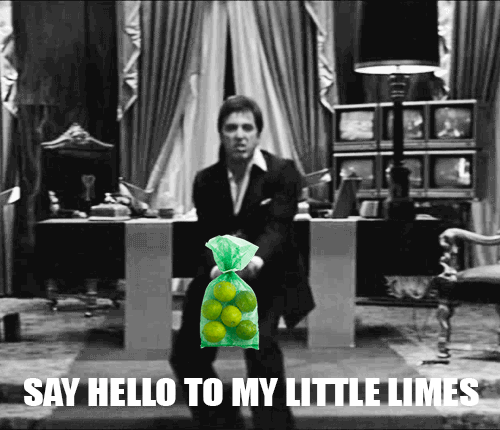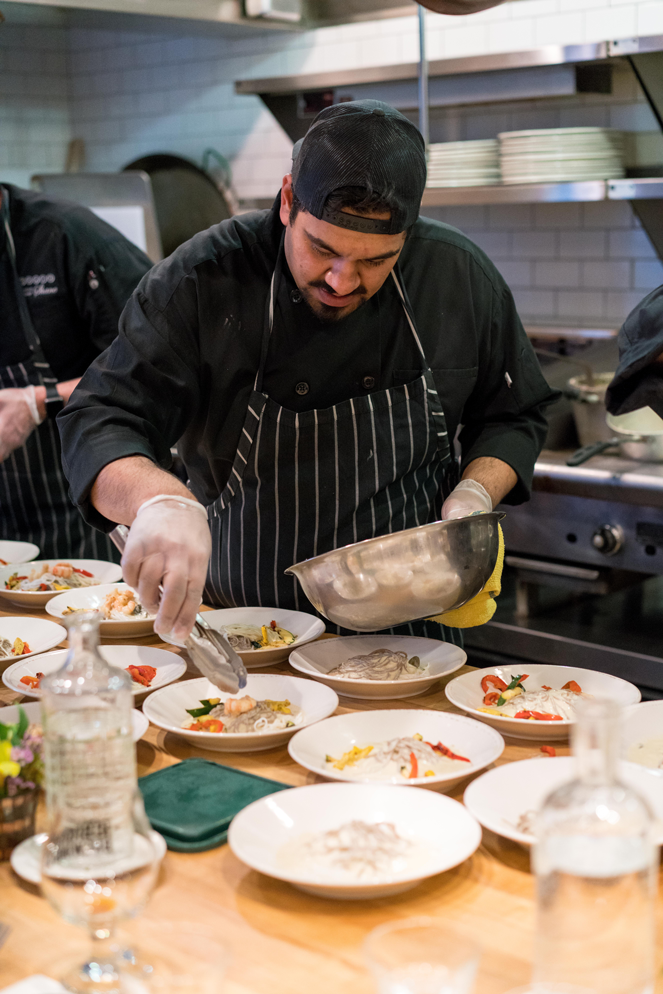Food Costs and the Price of Tea in China
What do the price of tea in China, the price of limes in the Bahamas, and the price of sesame seeds in Myanmar have in common with your restaurant food costs? The answer: more than you probably care to know…but more than you might think, so please bear with me.
It was the spring of 2014, and life was pretty good. I had just taken a restaurant consultant job in Nassau, Bahamas which is not a bad place to be any time of year…unless, it’s the spring of 2014 and your menu relies pretty heavily on limes. More on that later, but first let me tell you about the price of tea in China.
What do food costs have to do with the price of tea in China?
You: Hey Chaz, why should I listen to you tell me about food costs?
Me: I was once a contestant on Top Chef.
You: But what does that have to do with the price of tea in China?
If you’ve heard this phrase before, you must have been in a conversation where someone offered an idea or a comment that was off-topic or irrelevant. The sarcastic remark is made to suggest that this idea has as much to do with the conversation at hand as it does with the price of tea in China. In other words, you’re being told, “That’s an unlikely and remote possibility, and next time please think twice about saying something so dumb.”
But, au contraire, sarcastic one…what if the price of tea in China is more relevant than you might think??? If you’ve heard of the butterfly effect, you will appreciate that small, seemingly insignificant forces, such as the flapping of a butterfly’s wings, can cause major, outsized ripple effects. Another good example of this might be how a bumper year of cicadas can impact sesame seed futures and food costs for the BK whopper.
Billions of Breading
To understand that the microclimates of Indonesia, Myanmar, and Brazil are favorable to both sesame seeds and cicadas, we need look no further than one of my favorite HBO series, Silicon Valley. Since I lean more heavily toward the restaurant end of restaurant technology, I appreciate how the series makes light (fun) of the tech industry.
In the clip below, Richard Gregory, a VC whose clients are looking for an emergency capital injection to keep their startup dreams alive, is distracted by having been “driven past a Burger King.” Rather than take the meeting with his clients, he asks his assistant to order everything on the menu from Burger King, so he can study their product.
He comes to realize that many of their products use sesame seeds and also happens to put together that a coming bumper year for cicadas are likely to decimate crops in Brazil and Myanmar while Brazilian sesame seed futures recently hit a low. His investment in sesame seeds will ultimately yield enough profit to offer his clients a bridge loan of $15M. Easy way to make a buck, right?
El Chapo Had the Limes on Squeeze
The situation depicted by Silicon Valley is funny, but it also brings to light how vulnerable supply chains and food prices can be…which brings me back to the spring of 2014 in the Bahamas. Some of my objectives were to evaluate the restaurant’s P&L and identify opportunities to optimize recipes and plate costs. I noticed that the cost to produce many of our dishes and especially our cocktails seemed out of line. To try to figure out the culprit, we reviewed all of the invoices except the citrus purchases which were made in cash and picked up by the bartender for both kitchen and bar use.
It wasn’t until the next day that I realized that the price of limes was at $130 per case…up from about $23 per case!! The price had slowly been increasing for a month, and no one seemed to know why. What’s worse is that no one recognized the impact that it was having on the restaurant’s profits. We searched everywhere looking for limes, and the price was as insanely high across the board. Supermarkets had them at $3 per lime (!) for old, dry, and under-ripened fruits. But why?!?! Enter El Chapo.

Turns out, El Chapo, the Mexican drug lord, had just been captured from being on the run for several weeks. With the pressure from the authorities on, the cartel resorted to hijacking and squeezing lime truck drivers and farmers for extortion fees. Enough pressure to impact markets around the world.
So, rather than tell tourists in the Bahamas that we’re out of margaritas and daiquiris, we pivoted to frozen purees and available local alternatives. Other xtraCHEF customers, such as Tacolicious, were forced to do the same and change their margarita recipe.
Don’t Panic, There’s an App for That
The lesson here is a simple one. Sometimes, small, seemingly inconsequential changes can have large repercussions if left unchecked. The price of limes going up 600% in a month may seem like an outlier, and that’s true. But, similar price spikes have occurred for other popular food products in recent years, such as chicken, avocado, seafood, etc.
And, it’s not just the major price spikes to be concerned about. Think about what would happen if the price of your most popular ingredients increased 3% over the course of the month…and you didn’t even know price had been increasing. That’s money that you thought you made, but you didn’t.
Now, before you go panicking about how drug lords, labor strikes, cicadas, or droughts are going to screw your menu, you have some options. You could try to stay on top of gestation cycles of cicadas around the world and keep an eye on changing weather patterns in El Niño. Or, you could simply get started with xtraCHEF, and let the app tell you when the price of your ingredients are changing day to day or week over week.
With xtraCHEF’s weekly price alerts, food cost reports and weekly digests, you’ll be able to analyze your food costs without wasting time worrying about getting caught off guard. With xtraCHEF, you can run your restaurant while we run the numbers…no matter who might be on the run.


